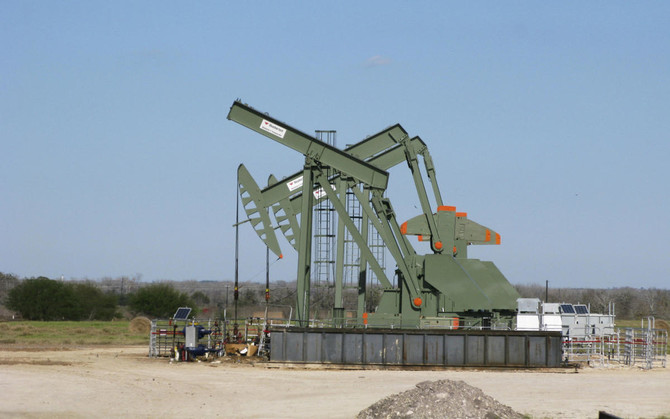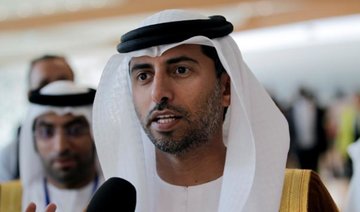LONDON: The Americans have a name for it — “Permania” — which they use to describe the frantic, even crazy, activity around the shale oil fields of West Texas.
In the past four years, the global energy market has been stood on its head by the boom in US crude production, to the point where the Americans are now producing more oil than Saudi Arabia and will soon overtake the world’s biggest producer, Russia.
The US’s 10 million barrels of oil per day account for roughly 10 percent of global output, and, as domestic demand for energy is saturated, they are being exported increasingly to the rest of the world.
That boom has unhinged the global oil market. The price collapse of 2014, the “Vienna Alliance” between OPEC countries and Russia, and the fiscal challenges of countries in the Gulf, are all down to the shale boom.
Sara Ortwein, president of Exxon Mobil’s shale business XTO Energy, told the CERAWeek by IHS Markit conference in Houston, Texas this week: “A decade ago, the idea of exporting US crude would have been seen as preposterous. Now, we have enough to satisfy US energy needs and sell it to the rest of the world.”
The Permian basin, west of Houston, Texas, and straddling New Mexico, is at the heart of the revolution. It produces 25 percent of American oil output, and has virtually changed the global oil equation on its own.
For traditional exporters like Saudi Arabia, it presents a big question: To join the party in Texas and other US shale fields, or to stick to pumping crude from the sands and seas of the Middle East?
“We have the golden goose, right before us,” said Tim Dove of Pioneer Natural Resources, one of the leading shale companies and among the first to exploit the Permian around the turn of the millennium. “We don’t drill dry holes, because we know the oil is there. Technology will only make it better. The sky is the limit,” he told the CERAWeek.
In a throwaway line, he seemed rather pleased about how he and other shale producers have caused confusion in the ranks of the traditional producers.
“I think that OPEC is impressed by what we’ve done, even if they are trying to get their arms about what it all means.”
He was speaking after a meeting with OPEC officials and traditional oil company executives in one of the many power-broking dinners around the CERAWeek venue.
It was the second year that OPEC had invited the shale barons to break bread in an attempt to end the undeclared hostilities between traditional oil producers and the Texans in place since the fall in prices in summer 2014.
Mohammed Barkindo, Opec general secretary, explains how the “peace” talks had come about. “We agreed last year to continue the dialogue with the Sahel industry. The last stage of the oil cycle has been the most injurious for all our members, and to everybody in the world. We all suffered. We had been operating in silos and we agreed to talk to the shale industry.”
Barkindo insisted that the meeting did not discuss oil prices or deals on limiting output, and Dove pointed out that US anti-cartel laws would make such agreements illegal.
“You cannot have these kind of talks in the US. We were invited and we went along. As far as I’m concerned, the dinner was congenial, and it may well become an annual event,” Dove said.
There has been speculation that some OPEC members might seek to do deals with shale producers as a way of balancing their portfolios and getting exposure to the upside in shale.
Amin Nasser, chief executive of Saudi Aramco, said that the company was always looking to get involved in growth areas, but he did not specify which ones.
But some in Houston questioned whether the shale industry had cured the “boom or bust” cycle of the past, when falling oil prices led to withdrawal of financial support from investors.
Others pointed out that shale still faced big problems in overcoming pipeline and shipping challenges, as well as opposition from the environmental lobby.
Mark Pappa, one of the pioneers of shale finance via his company EOG Resources, said that shale forecasts were too optimistic, and that the industry was exploiting cheap and easy assets that would quickly be exhausted.
“If shale does disappoint over the next four to five years, there are not a lot of safety valves in the system,” he said.
Dove dismissed these fears, pointing out that the shale industry’s cost breakeven price was only $19 per barrel. “There is no downturn price that would affect our profitability until it gets to below $40 a barrel,” he said.
Nonetheless, Papp’s skepticism was a wake-up call in Houston for an industry that was basking in its own considerable achievements.
But the convinced “Permaniacs” remained optimistic. Ortwein, who suggests the Permian could eventually be producing five million barrels of oil per day, half the total output of Saudi Arabia, said: “Permania is not a fad, it is permanent.”
The big question for US shale: Is it permanent or just ‘permania?’
The big question for US shale: Is it permanent or just ‘permania?’

Stc Group issues US dollar-denominated sukuk with a total value of $2bn

RIYADH: Stc Group has issued US dollar-denominated sukuk with a total value of $2 billion across two tranches.
The group clarified that the issuance included the offering of $750 million in sukuk with a 5-year maturity at a yield of US Treasury plus 75 basis points, and an issuance of $1.250 billion with a 10-year maturity at a yield of UST plus 90 basis points, according to the Saudi Press Agency.
It noted that the total order book exceeded $8 billion across both tranches, with a coverage rate exceeding 4 times, and participation from over 300 investors in the subscription.
The issuance garnered strong demand from a broad and diverse base of international investors, reflecting solid confidence in the robustness and efficiency of stc Group’s business model and strategy.
This strategy is aimed at strengthening its digital leadership, seizing infrastructure opportunities, enabling massive projects, and contributing to the realization of Vision 2030 objectives, with a focus on achieving sustainable growth based on operational efficiency and maximizing shareholder value.
This issuance enhances stc Group’s access to international capital markets and solidifies investor confidence in the strength of its credit position.
It also supports its strategic role in accelerating the pace of digital transformation in the Kingdom and building a thriving digital economy.













